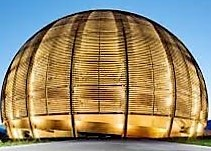Speaker
Description
Diffuse gamma-ray emission from the decay of radioactive 26Al and 60Fe is a messenger about the nucleosynthesis activity in our current-day galaxy. Because this material is attributed to ejections from massive stars and their supernovae, we can learn from the gamma-ray signal about massive stars and their feedback into surrounding interstellar medium. Our method of population synthesis of massive-star groups has been refined as a diagnostic tool for this purpose. It allows to build a bottom-up prediction of the diffuse gamma-ray sky when known massive star group distributions and theoretical models of stellar evolution and core-collapse supernova explosions are employed. We find general consistency of an origin in such massive-star groups, in particular we also find support for the clumpy distribution of such source regions across the Galaxy, and characteristics of large cavities around these. A discrepancy in the integrated 26Al gamma-ray flux is interpreted as an indication for excess 26Al decay in nearby regions. The 60Fe gamma-ray signal is much weaker (<40%) than the 26Al signal, and plausibly consistent with our bottom-up modeling, within uncertainties. Comparisons to hydrodynamical simulations of radioactivity ejections from such massive-star groups have proven useful to help understand how massive-star feedback shapes surrounding medium and distributes ejecta.




